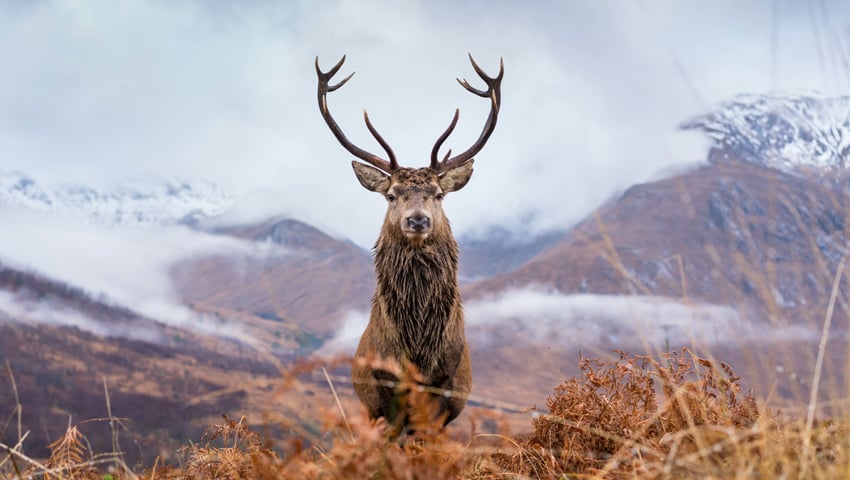NEW RESEARCH from the Cairngorms Connect Partnership demonstrates the use of controlled deer culling for forest regeneration across Scotland.
The Cairngorms Connect Partnership, established in 2014, aims to enhance habitats, species and ecological processes across the Cairngorms National Park. As part of that vision, scientists from the Partnership compiled decades of data showing how long-term coordinated deer culling enables trees to recolonise upland areas – without need for fencing or planting.
Scotland’s trees have been suffering declines for a long time. Native pinewoods covers only one percent of their former range following centuries of human interference, like felling and grazing livestock. A shrinking production of viable seeds also plays a part in their diminishing population.
Despite livestock numbers being reduced in many areas, trees have been battling an increasing number of deer. Both red and roe deer are a natural and important part of Scotland’s landscape, however, an absence of predators and historic land use means their numbers are unsustainably high over large areas. Ultimately, this results in little chance for trees to re-establish in areas where woodland has been lost.
The good news is that there is a vast amount of potential areas with the ability to accommodate more trees. Restoring these woodlands is a vital way to aid our current climate crisis – but how do we do it?
Speaking to the British Ecological Society, Dr Pip Gullet, a scientist for the Partnership, said, “Our findings show that woodlands do regenerate and expand successfully in the presence of deer. But that depends on their numbers being kept relatively low for long periods”.
The organisations involved in the Partnership (Forestry and Land Scotland, RSPB, NatureScot and WildLand Limited), collected data from as far back as the 1970’s to determine the rate of restoration of native woodlands over the years. Results indicate that each plot of land managed by the Partnership has experienced considerable regeneration since the late 1990’s when deer fences were removed and culling widely increased. In fact, many parts of the Cairngorms area are now believed to have less than the four deer per km2 threshold at which natural regeneration tends to increase.
Duncan Orr-Ewing, RSPB Head of Species and Land Management said, “Deer management gives forests and peatlands space to recover, whilst also bringing a ton of benefits from supporting populations of rare species to storing carbon and flood mitigation.
“Our activities over centuries have created an absence of natural predators in Scotland and the rest of the UK, so now deer populations must be managed by humans to reduce damage to sensitive habitats.”
The Cairngorms Connect Partnership study is believed to be the first of its kind to offer published evidence supporting the use of deer culling for woodland expansion across such a large area of land. The findings are also a testament to the power of partnerships when working to achieve environmental goals.
Dr David Hetherington a co-author from the Cairngorms National Park Authority spoke of “At least another 10,000 hectares of native woodland expansion to be delivered across the Cairngorms National Park through unfenced regeneration by 2045”. Cairngorms Connect and other similar partnerships will be integral to making this happen.
